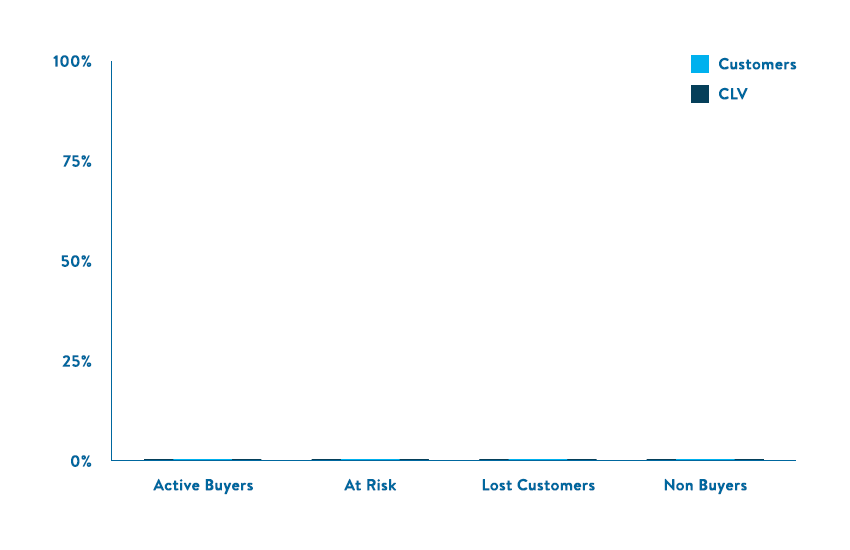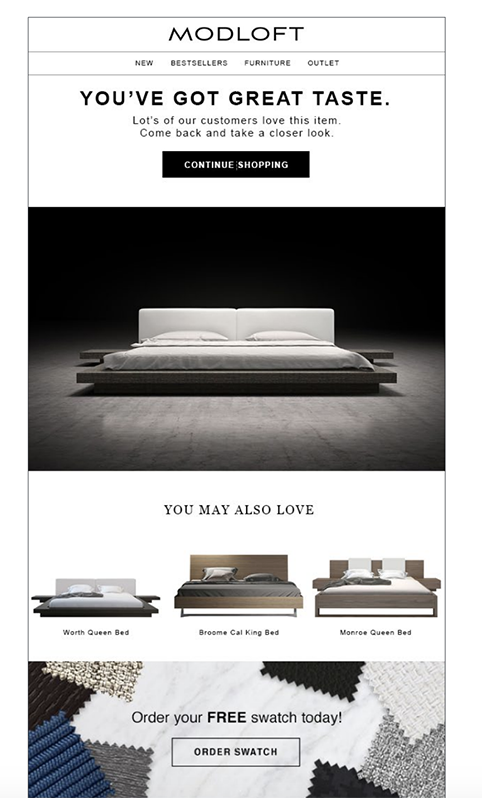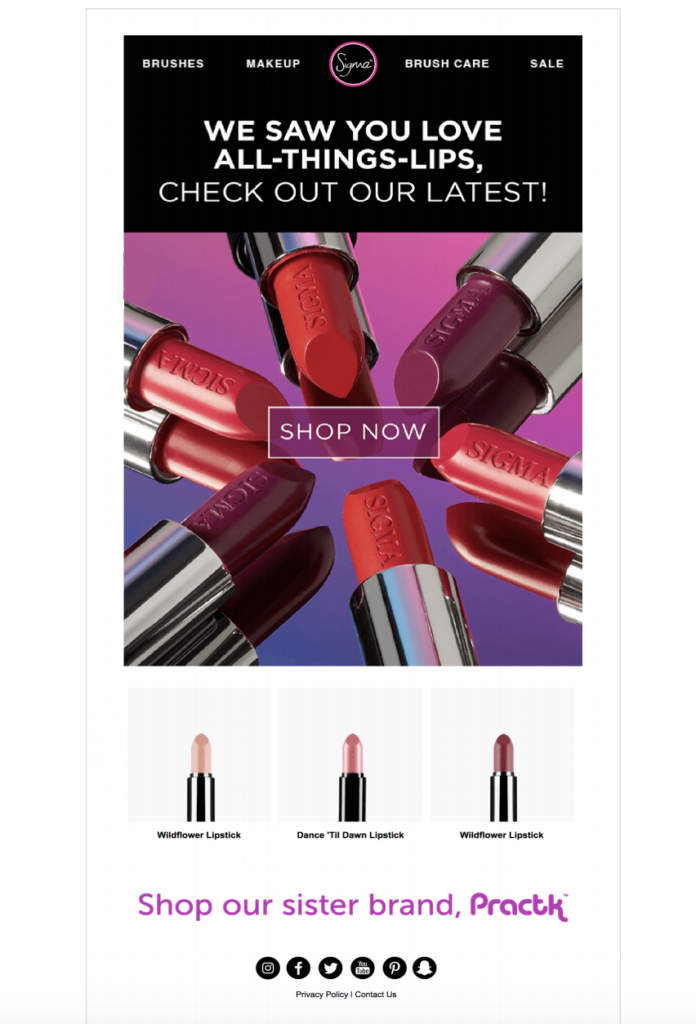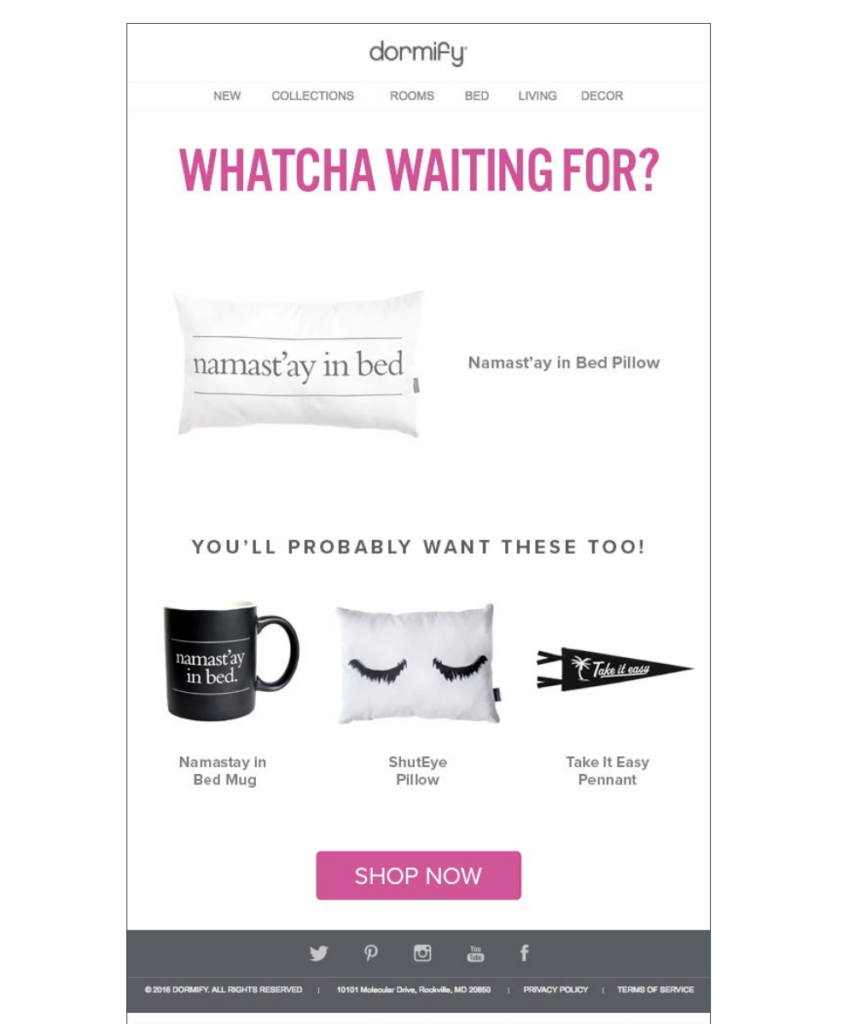The retailer’s guide to browse abandonment emails
Every ecommerce retailer faces challenges around browse abandonment. In fact, research reveals that over 90% of visitors to ecommerce retailers leave without adding a product to their cart. The good news is, while browse abandonment is common, so are the emails that help recapture customers. Let’s take a look at the concept of browse abandonment, why it’s important, and the types of emails marketers have at their disposal.
What is browse abandonment?
Browse abandonment refers to when a visitor comes to your website but leaves without taking a desired action. For retailers, browse abandonment occurs when a customer visits the site but leaves before adding anything to their cart or purchasing a product. Browse abandonment can also be known as site abandonment.
Unfortunately, retailers lose potential customers to browse abandonment every day. When you break it down, it makes sense. Think of the online shopper as a typical visitor at a brick-and-mortar retail store. They will browse through products but ultimately leave without buying anything. While there’s a possibility they were only browsing to pass the time, there’s an even better chance they had purchase intent but just weren’t ready to buy.
Noting and nurturing a shopper’s purchase intent is crucial to preventing browse abandonment and growing your organization’s bottom line. If a visitor has purchase intent, then it’s possible to convert their web visit into a sale with the right marketing tactics, including browse abandonment emails.
[ Download our Triggered Email Template Design Lookbook ]
Why are browse abandonment emails important?
Browse abandonment emails are targeted emails sent to shoppers who viewed products but never placed an item in their shopping cart or made a purchase. These automated emails should be personalized based on customer data to increase click-through rates and drive sales.
Think about it. Even bringing just 2-3% of your customers closer to purchasing can have an incremental effect on your sales. Think of it this way — if your website gets 30,000 visitors per day, but only 7% add a product to their cart, you’re just a few clicks away from generating 2,100 more purchases. That’s not bad, but if you can move the needle to have 10% of customers add products to their cart, that means 900 more potential sales in a single day.
Many retailers focus primarily on generating traffic and hope that a fraction of that traffic will turn into sales. Instead of casting a wide net and hoping a small percentage of visitors will convert, retailers need to take a more personalized approach to targeting. If they send personalized emails and product recommendations based on a visitor’s onsite activity, interests and customer lifecycle stage, they stand a better chance of turning those visitors into customers.
It’s easier to help customers along their buying journey than you may think. Browse abandonment emails are an effective way to encourage visitors to make a purchase, especially when it comes to established customers who represent a large portion of revenue.
Top questions about browse abandonment
- What is the difference between browse abandonment and cart abandonment?
Browse abandonment refers to when a shopper exits the site without adding anything to the cart or making a purchase while cart abandonment refers to when a shopper adds an item/s to the cart but doesn’t complete the purchase.
What are common reasons for site abandonment?
Site abandonment can occur for any number of reasons with the most common being technical issues, irrelevant items, confusing navigation, lack of trust, and lack of clear value proposition. It’s important for retailers to optimize their website to provide a seamless, user-friendly experience that meets the expectations of the customer. - How do you decrease site abandonment?
There are a number of ways to decrease site abandonment including A/B testing, ecommerce personalization, incentives, and more. - What is an example of browse abandonment flow?
Browse abandonment flow refers to the timing and “flow” of messages sent after a shopper leaves the site. An example of browse abandonment flow might be an SMS message sent 2-3 hrs after abandonment followed by an email sent 24-36 hrs later. Tools like Bluecore utilize AI to create the optimal flow. - How can I re-engage users who abandonment my site?
Re-engaging shoppers who have abandoned your site is crucial in minimizing site abandonment and maximizing sales. Customers can be re-engaged through browse abandonment emails, retargeting, live chat, social media engagement and more.
Improving conversion rates with browse abandonment emails
Browse abandonment emails provide an effective way to reduce churn by retargeting and recapturing customers who visited your site during their purchasing journey. With the right data and marketing technology, your team can send these visitors personalized browse abandonment emails with product recommendations that will encourage them to take another look at your products.
The first step to creating a successful browse abandonment campaign is making sure your entire product catalog is accessible to your retail email marketing solution. This may seem like a time-consuming process, but with a solution like Bluecore, integrating and managing your existing products is as easy as inserting a single line of code onto your website. When your retail email solution can source recommendations from an always up-to-date product catalog, your emails can be tailored precisely to each visitor’s preferences.
To find these preferences, segment your visitors into audiences. These audiences could be as granular as “female product page abandoners with high customer lifetime value” or as broad as “every product abandoner we can email.” While granular audiences often promote more conversions, a general audience can help ensure you are reaching every potential customer.

After you have integrated your product catalog and built audiences, you can automatically match visitors to products that suit them. For instance, if a visitor navigated away from a product page, you can send them a personalized email that features the product they abandoned as the hero image along with product recommendations based on similar products other customers co-viewed or co-purchased. These targeted product recommendations will speak directly to the unique interests of the visitor, encouraging them to return to your website and convert. Critically, automating the send of these emails by only requiring a one-time set up for the campaign will help achieve scale and ensure any visitor who meets the set audience criteria will receive these retargeting efforts.
Examples of browse abandonment emails
There are two primary types of browse abandonment emails: Product abandonment and search abandonment. Each type of email should be individually targeted based on a visitor’s unique browsing habits and send automatically after the shopper completes a predetermined set of actions. Let’s take a closer look at how browse abandonment emails work in practice.
Search Abandonment Emails

Search abandonment emails are ideal for when a customer uses your site search function to find a product, but never actually click on any of the search results. Unfortunately, these search terms can be quite broad: They may search for a type of product, a certain attribute, a category, or even something as vague as a color. This can make getting targeted to each customer’s unique interests within search abandonment emails difficult without dynamic, AI-driven product recommendations.
With dynamic, AI-driven recommendations, you can automatically populate the products featured in each email to lead customers back to the products included in their search or show them a product that is similar to what they searched for, but not necessarily on the results page. An advanced email marketing solution can even determine if a customer simply wasn’t searching your site effectively and show them the products they were looking for.
Category Abandonment Emails

Category abandonment emails target customers who stopped browsing your website while viewing a specific category page. These visitors showed interest in a certain type of product but didn’t consider a particular product.
When designing these emails, use plenty of product images and only use text when it is necessary. Incorporate personalized product recommendations into the design too, as doing so will help get customers back onto your website. These recommendations could be anything from best sellers from the category page to items that similar customers liked.
Product abandonment emails

Product abandonment occurs when a visitor lands on a product page but leaves without adding anything to their cart. Visitors that engage in this type of browse abandonment are often very interested in a certain type of product, which gives retailers a great opportunity to recapture their interest.
When creating personalized emails for these visitors, show a high-quality image of the product(s) they viewed and provide a CTA that asks them to consider looking at the product one more time. Do not list the price unless it is significantly discounted and the customer has previously shown an interest in discounts.
In addition to these features, include personalized product recommendations at the bottom of the email. This is a great opportunity to cross-sell top-selling products or show items that similar consumers bought after viewing that product. This will help you sell to customers who navigated away from the page because the product didn’t quite fit their needs, since you are offering another product that is slightly different. These efforts will help you seize every opportunity to get them back on your website.
Browse abandonment emails lead to increased sales
Site abandonment is a significant source of churn for online retailers. Thankfully, it is possible to nudge these customers along on their purchasing journey by using triggered emails. Doing so will allow you to not only enjoy more sales, but also collect important information about customer interests and behavior.
Before you set out to reduce browse abandonment, find an email marketing solution that’s specifically designed for retailers. This will help you make the most of customer information to increase conversions by providing personalized product recommendations and preventing browse and cart abandonment. With a smart approach to retail email marketing, you will enjoy greater sales while gaining a competitive edge.


